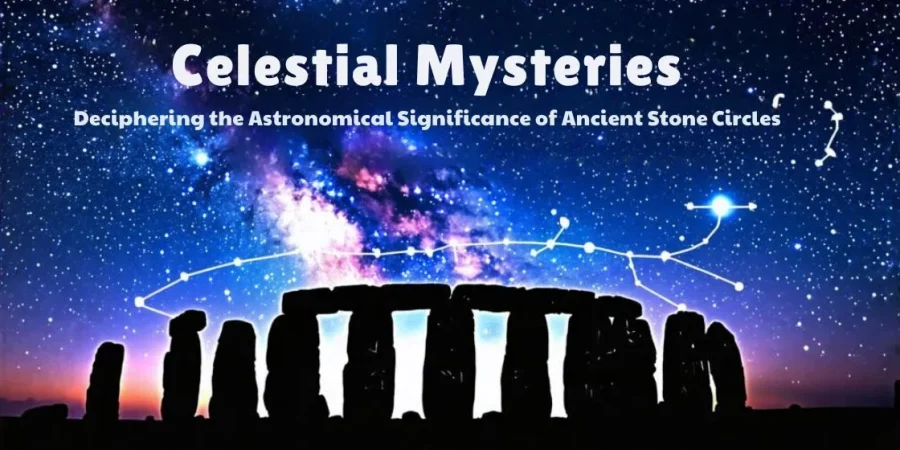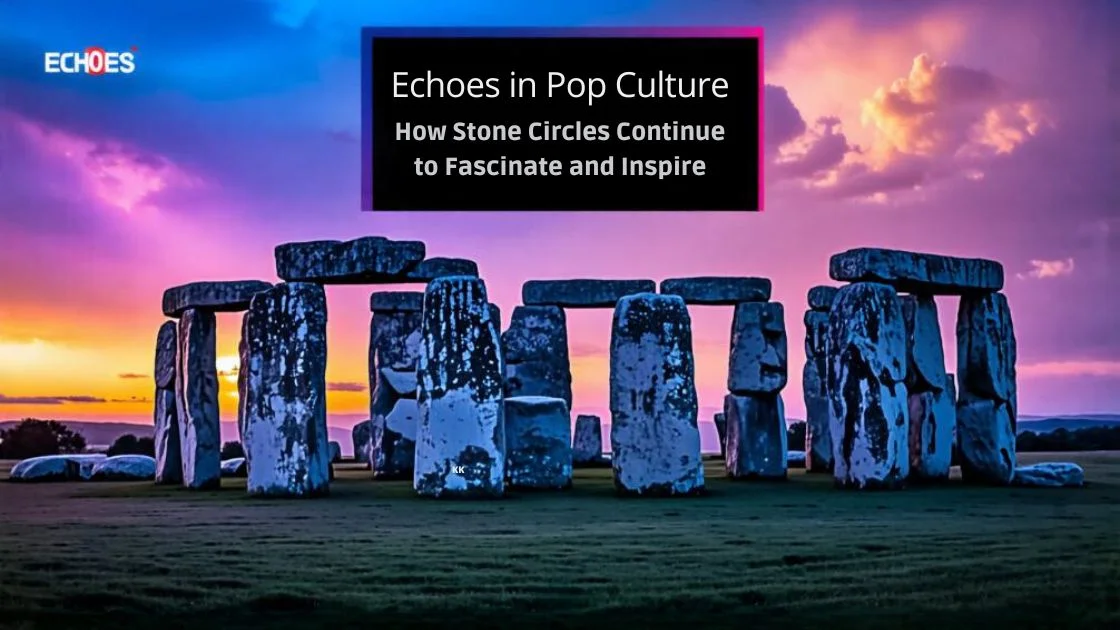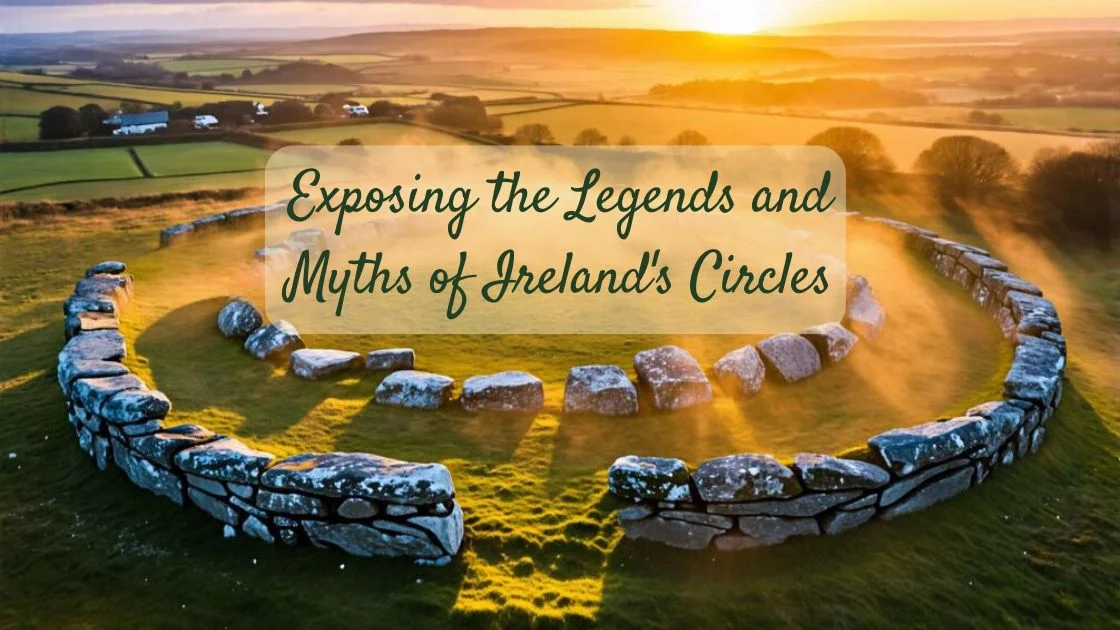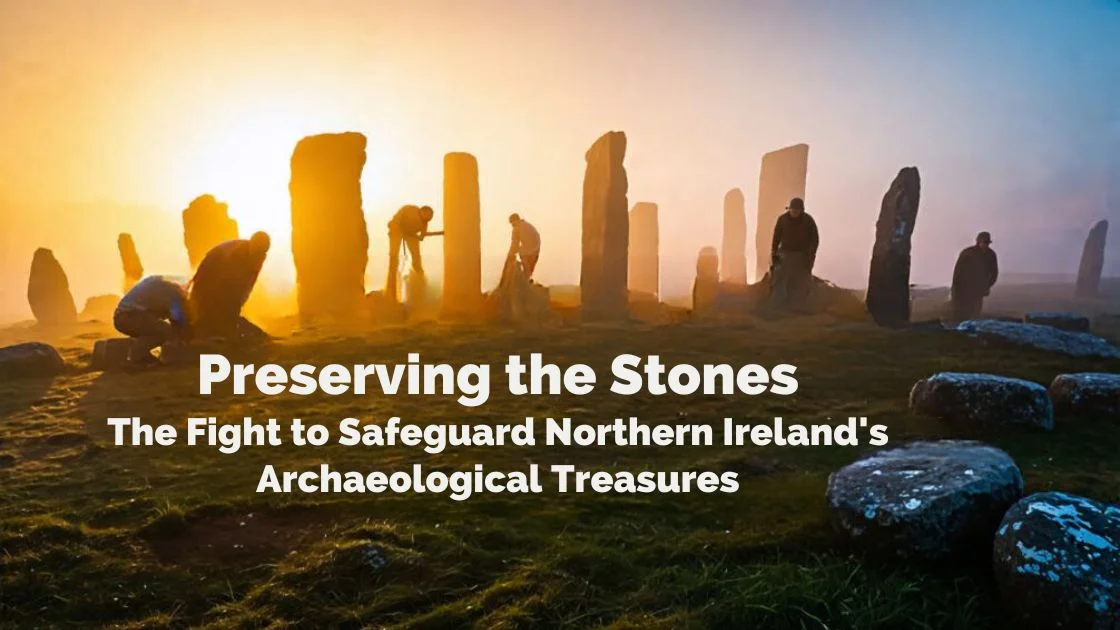You’re about to peel back the celestial secrets of ancient stone circles, where astronomy and mystery intertwine. Imagine touching the cool, weathered stones that whisper tales of Neolithic stargazers.
They’ve stood guard over Ireland’s landscape, marking time and seasons long before written history.
Dive into the past and unravel how these silent sentinels shaped our ancestors’ lives and beliefs.
Get ready; you’re on the cusp of uncovering the astronomical significance of these enigmatic monuments.
Introduction – Brief overview of ancient stone circles in Northern Ireland
You might’ve walked among the ancient stone circles scattered across Northern Ireland, not fully grasping their significance. These enigmatic formations are more than mere relics of the past; they’re keys to understanding the celestial knowledge and cultural practices of our ancestors.
As you’re about to find out, they hold a special place in the study of archaeoastronomy and our collective history.
Importance of these sites in archaeoastronomy and cultural history
As you delve into the enigmatic world of Northern Ireland’s ancient stone circles, you’re uncovering a critical chapter in the history of archaeoastronomy and cultural heritage. These megalithic structures aren’t just relics; they’re keys to understanding how ancient societies interacted with the cosmos.
Through archaeoastronomy, you’re peering into the minds of our ancestors, discerning how they marked celestial events and used them to shape their lives. It’s not just about the physical layouts; it’s the cultural significance that’s truly astounding. These circles were likely centers for rituals and gatherings, reflecting the deep connection people felt with the sky.
Your exploration reveals more than stones—it uncovers a legacy of astronomical knowledge and cultural richness that’s as enduring as the circles themselves.
Historical Context: Neolithic and Bronze Age periods in Northern Ireland
You’re about to step back in time to Northern Ireland’s Neolithic and Bronze Age periods. During this time, communities erected mesmerizing stone circles like Beaghmore, Ballynoe, and The Giant’s Ring. These sites weren’t just random placements; they’re thought to have played a crucial role in tracking celestial events. As you explore these ancient wonders, consider how they reveal the sophisticated astronomical knowledge of our ancestors.
Introduction to the most prominent stone circles: Beaghmore, Ballynoe, The Giant’s Ring
Dive into the history of Northern Ireland’s three monumental stone circles—Beaghmore, Ballynoe, and The Giant’s Ring—each a testament to the sophisticated celestial knowledge of our Neolithic and Bronze Age ancestors.
The Beaghmore stone circles, a complex of seven circles accompanied by cairns and stone rows, offer a glimpse into ancient astronomical practices. Not far behind in mystery and grandeur is Ballynoe, a large oval stone circle that whispers the secrets of the past.
Then there’s The Giant’s Ring, a henge monument encircling a space vast enough to stir the soul. These sites aren’t just relics; they’re gateways to understanding how early societies interacted with the cosmos, marking the seasons and guiding rituals with the stars as their map.
Architectural and Astronomical Features of these stone circles
You’ve seen how these ancient stone circles dot the landscape of Northern Ireland, but have you considered their precise architectural design and astronomical purpose?
As you look closer, you’ll find that the alignments may not be coincidental, pointing to significant solar and lunar events.
These silent sentinels of stone could be the key to unlocking the celestial knowledge of our ancestors.
Exploration of their potential astronomical alignments and significance
As you explore the enigmatic stone circles of Northern Ireland, it’s evident that their architects aligned them with celestial bodies, revealing a sophisticated understanding of astronomy. These ancient architects didn’t just place stones at random; they were keen observers of the sky, integrating astronomical alignments into their construction.
The positioning of some stones directly corresponds with the sun’s journey at solstices, marking the longest and shortest days. Others align with lunar events, serving as ancient calendars in the landscape. This isn’t mere coincidence; it’s a deliberate design, a testament to the astronomical knowledge of the time.
As you stand within these circles, you’re not just in the presence of history, but also amidst ancient observatories, where celestial movements were once closely monitored and celebrated.
Cultural and Religious Implications and significance of these circles
You’re stepping into a realm where ancient rituals and ceremonies breathe life into the cold stones.
Imagine the societal functions these sites served, from marking the passage of seasons to celebrating life’s milestones.
These circles weren’t just stone; they were the heartbeat of communities, echoing beliefs and customs across millennia.
Overview of rituals, ceremonies, or societal functions these sites might have served
Delve into the past and uncover how ancient stone circles played a pivotal role in the rituals and social structures of Neolithic and Bronze Age societies.
It’s clear these sites weren’t just random rock placements; they held deep cultural resonance. You can imagine communities gathering under the open sky, the astronomical significance of stone circles guiding their seasonal celebrations and ceremonies.
These timeless structures likely marked the passing of solstices, equinoxes, and lunar phases, embedding celestial patterns into human tradition. They weren’t merely remnants of primitive curiosity but rather sophisticated expressions of ancient knowledge and spirituality.
Each stone might’ve witnessed rites of passage, communal decisions, or offerings to deities, embedding a rich tapestry of cultural narratives into the very landscape.
Archaeoastronomy: Blending Archaeology and Astronomy
You’re stepping into the realm of archaeoastronomy, where the ancient world’s understanding of the cosmos is unearthed through a unique fusion of archaeological digs and astronomical analysis.
Modern methods like 3D modeling and simulations bring you closer to unraveling the celestial code etched into these stone circles.
As you explore further, you’ll encounter groundbreaking theories and findings that shine a light on our ancestors’ remarkable astronomical knowledge.
Introduction to the field of archaeoastronomy
Archaeoastronomy, the hybrid discipline you’re exploring, merges the analytical tools of archaeology and astronomy to unlock the celestial secrets of ancient structures.
As you delve into this fascinating field, you’ll discover how past civilizations intertwined their daily lives and spiritual beliefs with the cosmos.
Through archaeoastronomy, you’re not just studying stones and bones; you’re piecing together a puzzle of human history that reaches for the stars. This approach reveals how ancient builders aligned their monuments with astronomical phenomena, offering insights into their knowledge and culture.
How modern research methods are applied to study these ancient sites
Exploring these stone circles, you’ll find that modern archaeoastronomers employ a suite of advanced techniques to unravel their secrets. They’re blending traditional archaeological digs with high-tech tools, digging deep into the past to shed light on these ancient enigmas.
You’re stepping into a world where aerial photography soars above to capture patterns invisible from the ground. 3D modeling reconstructs long-lost structures, offering a virtual glimpse into prehistoric life. Astronomical simulations bring the heavens down to Earth, revealing how stones align with stars once worshipped by ancient eyes.
These modern research methods peel back layers of time, merging science with the sacred, guiding you to unlock the celestial code that’s been silent for millennia. With each discovery, you’re not just solving historical puzzles—you’re bridging the gap between our ancestors and the stars.
Examples of significant findings or theories
Modern archaeoastronomy’s toolkit has unearthed findings that illuminate the complex relationships between ancient stone circles and the celestial bodies they align with. As you delve into this field, you’ll encounter theories that these megalithic structures were far more than mere markers of time. They served as grand astronomical observatories, where ancient peoples could track cosmic events like solstices and equinoxes with astonishing precision.
Discoveries at sites like Beaghmore in Northern Ireland reveal deliberate alignments with the Sun and Moon, highlighting a sophisticated understanding of celestial mechanics. Such research underscores the significance of these stone circles beyond their physical grandeur—they’re testaments to the ingenuity and cosmological insights of our ancestors, seamlessly merging spirituality with the science of the skies.
Comparative Analysis with Other Megalithic Sites in Britain and Europe
You’ll notice that the stone circles in Northern Ireland share striking features with other megalithic sites like Stonehenge. These similarities suggest a broader cultural tapestry that wove together communities across Britain and Europe during the Neolithic and Bronze Age.
Let’s explore how these shared characteristics could point to common cultural or religious practices among ancient peoples.
Discussion on the shared characteristics and possible cultural connections
As you delve into the study of ancient stone circles in Northern Ireland, you’ll notice striking similarities with other megalithic sites across Britain and Europe, suggesting deep-rooted cultural connections. These structures, often considered prehistoric observatories, echo the human desire to comprehend celestial patterns.
It’s fascinating how these circles not only align with the sun and moon but also share architectural techniques, indicating a transfer of knowledge or shared beliefs. They stand as testament to our ancestors’ ingenuity and their quest to bridge the earthly and the divine.
Preservation Efforts and Tourism Benefits
As you explore the ancient stone circles of Northern Ireland, you’ll uncover their dual role as historical treasures and tourism powerhouses.
Preservation of these sites not only protects invaluable cultural heritage but also fuels local economies through increased visitor interest.
Your visit supports a delicate balance, sustaining conservation efforts while enjoying the mystique and grandeur of these celestial observatories.
Their role and significance in modern-day tourism in Northern Ireland
During your visit to Northern Ireland, exploring the ancient stone circles not only connects you to the celestial past but also supports local preservation efforts and boosts tourism.
These megalithic wonders are more than relics; they’re vital to maintaining the rich tapestry of Northern Ireland heritage. By visiting Beaghmore, Ballynoe, or The Giant’s Ring, you’re contributing to the economy and aiding in the upkeep of these historical sites. Your curiosity helps ensure they remain for future generations to marvel at.
Moreover, the narratives woven around these circles—enriched with local lore—add depth to your experience. Encouraging sustainable tourism practices, your interest safeguards these ancient landmarks and perpetuates the understanding of a shared human history under the stars.
Local Lore and Myths surrounding these stone circles
You’ve likely heard the whispers of giants and druids when it comes to ancient stone circles like Beaghmore or The Giant’s Ring.
These tales weave a rich tapestry of mystery, offering a glimpse into how our ancestors might’ve perceived these enigmatic structures.
They don’t just color our imagination but also shape the understanding and allure of these prehistoric sites.
How these stories contribute to the mystique and understanding of the sites
The local lore and myths enveloping these ancient stone circles deepen your appreciation and bewilderment, adding a rich tapestry of stories to their historical significance.
As you wander among the megaliths, you’re not just tracing the paths of ancient ceremonies; you’re walking the very ground that birthed countless tales. These narratives, often entwined with celestial mysteries, offer a window into the minds of those who once gazed upon the same skies.
They convey the awe and reverence the ancient people held for the cosmos, transforming cold stone into living monuments of wonder. Each myth serves as a reminder that these sites were once centers of a world rich in symbolism and spirituality, bridging the gap between earth and the heavens.
Conclusion: Recap of the importance of these stone circles in understanding ancient civilizations
Explore how ancient stone circles in Northern Ireland unveil the sophisticated celestial knowledge of our ancestors, bridging history and astronomy to shed light on Neolithic and Bronze Age civilizations. These enigmatic formations aren’t just relics of the past; they’re keys to the astronomical prowess and cultural depth of societies long gone.
By studying these megaliths, you’re diving into a world where Celtic astronomy wasn’t just a science but intertwined with daily life and spirituality. These circles weren’t mere stone configurations; they were the GPS of their time, guiding and marking significant celestial events.
Your journey through their history isn’t just academic; it’s a homage to human ingenuity. Their preservation helps keep the story of our species alive, highlighting an era when the cosmos guided us more visibly than today.
Conclusion
As you step away from the whispering stones, you’ve unlocked a chapter of our ancestors’ celestial saga.
These ancient circles aren’t just stone; they’re a testament to a time when the sky was a grand canvas for understanding our place in the universe.
They’ve stood as silent witnesses to millennia, and today, they beckon us to remember and celebrate the ingenuity of those who once watched the stars just as we do now.



